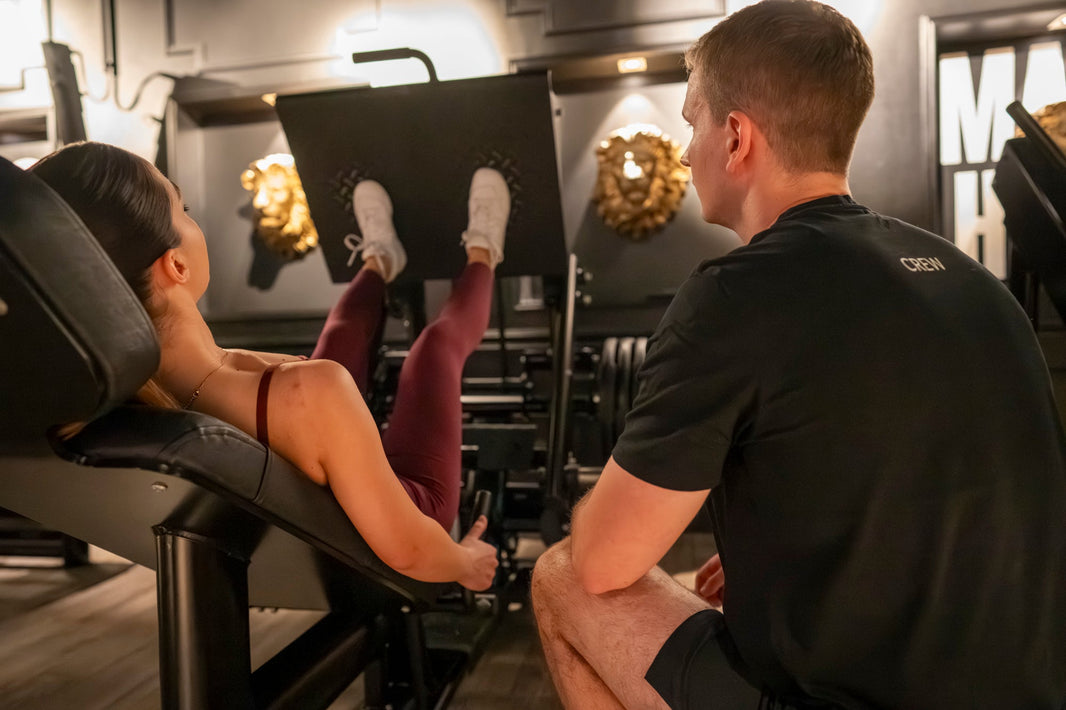Blood Flow Restriction Training for Strength and Rehabilitation: How, When, and Why to Use It
Blood flow restriction training (BFR) has become a much-talked-about method in both rehabilitation and strength training settings, helping people achieve gains in muscle size and strength when traditional high-load resistance training isn't an option. Whether you're a physical therapist working with post-operative patients or a strength coach managing a deload week for athletes, blood flow restriction therapy offers a unique solution: it enhances results with lower loads and less joint stress.
This article is worth reading because it distills a wide range of research — including a systematic review and meta-analysis by Wortman et al. (2020) — into practical takeaways for real-world use. While there’s some evidence in specific contexts, the overall research picture remains mixed. BFR may offer small to moderate benefits in certain rehabilitation and low-load scenarios, but it’s not a top-tier method for every training goal. By the end, you’ll know how to apply occlusion training safely, when it’s most effective, and when it might fall short.
What Is Blood Flow Restriction Training and How Does It Work?
Blood flow restriction training involves applying a cuff or elastic wrap around the upper portion of a limb to partially restrict venous blood flow while allowing some arterial inflow. This creates a hypoxic, high-metabolic-stress environment that enhances the effects of resistance training even at low-load intensities (typically 20–40% of 1RM).
The mechanism is simple but powerful: by reducing muscle blood flow, the muscle fatigues faster, increasing recruitment of type II fibers and stimulating hypertrophy. This mimics the effects of high-load resistance training without placing the same stress on joints and connective tissue — a game-changer in rehabilitation and recovery contexts.
When Should You Use Blood Flow Restriction Training?
The effect of blood flow restriction is most pronounced when traditional heavy lifting isn’t viable. In rehabilitation after injury or surgery, patients can perform low-load resistance training combined with blood flow restriction to preserve muscle mass and strength. It’s also effective during deloads, recovery weeks, or in populations with compromised joint health.
In clinical settings, blood flow restriction therapy preserves strength and function without aggravating healing tissues. In performance contexts, it's used to increase training volume without overloading tendons or joints. But in well-trained athletes already doing full resistance training with blood flow unrestricted, BFR provides little extra benefit.
What Does the Research Say About BFR Training?
A systematic review and meta-analysis by Wortman et al. (2020) revealed that:
-
~78% of studies found improvements in strength
-
~50% reported hypertrophy gains
-
~75% reported performance improvements when BFR was combined with traditional resistance training
In contrast, a study by Scott et al. (2017) showed that training with blood flow restriction added to a regular strength training program did not enhance outcomes in semi-professional athletes. This underscores the importance of matching the method to the context: BFR training may not benefit already highly loaded programs.
What Are the Key Benefits of Blood Flow Restriction in Rehabilitation?
Blood flow restriction rehabilitation is particularly useful for maintaining muscle size and strength when high load resistance training is contraindicated. For instance, during early post-surgical phases where tendons or ligaments are healing, applying BFR can stimulate adaptation without risking re-injury.
Evidence also shows improvements in muscle torque, endurance, and functional outcomes like walking speed and stair-climbing when BFR is added to aerobic exercise training or low-intensity resistance training. It’s one of the most valuable additions to modern physical therapy.
How Do You Set Up a BFR Training Program?
A basic BFR training program might look like this:
-
Load: 20–40% of 1RM
-
Cuff pressure: 40–80% limb occlusion pressure (LOP), or ~7/10 perceived tightness
-
Reps: 30–15–15–15 with 30 seconds rest between sets
-
Frequency: 2–3 times/week for at least 3–4 weeks; up to 1–2x/day in acute rehab
Common exercises include walking, cycling, resistance exercise with blood flow restriction, and isolation movements like biceps curls, leg extensions, and hamstring curls. Importantly, BFR should supplement — not replace — regular strength training when full loads are safe to use.
Is BFR Safe? What Are the Contraindications?
The safety of BFR training has been extensively studied, and it’s generally well tolerated when protocols are followed. But individualization is key. The BFR 'Positionspapier', a German guideline, recommends:
-
Avoiding BFR in individuals with cardiovascular disease, vascular surgeries, sickle cell anemia, or uncontrolled hypertension
-
Monitoring systolic blood pressure and signs of neuromuscular fatigue
-
Adjusting restriction pressure based on limb size, health status, and training phase
The effect of resistance should never come at the cost of safety. Always supervise BFR in clinical or high-performance environments.
Can BFR Be Used with Aerobic or Low-Intensity Exercise?
Yes — and it's surprisingly effective. Protocols using low-load resistance training with blood flow restriction and even low intensity rowing with blood flow restriction show positive effects on muscle adaptation and cardiovascular markers. Intermittent blood flow restriction during cycling or walking has been shown to improve VO2 max and endurance markers.
In some studies, rowing with blood flow restriction over several weeks led to meaningful strength and endurance improvements, without the joint wear typical of higher-impact modalities.
Does BFR Work for Healthy, Trained Individuals?
This is where context matters. The effect of blood flow restriction training appears diminished in highly trained populations already using high-load resistance training. As Scott et al. (2017) showed, adding BFR to a fully loaded athlete's plan did not boost performance.
However, in phases of injury, fatigue, or deload, even elite athletes can benefit from resistance training combined with blood flow restriction to maintain adaptations. It’s a tool — not a replacement — for heavy lifting.
What Are the Mechanisms Behind BFR’s Effectiveness?
Training with blood flow restriction stimulates:
-
Increased muscle fiber recruitment at lower loads
-
Enhanced metabolic stress
-
Elevated growth hormone and IGF-1 release
These mechanisms explain why exercise and blood flow restriction can result in hypertrophy and strength gains comparable to high load resistance training. It works particularly well in inducing adaptations in the quadriceps muscleand other large muscle groups.
When Should You Not Use BFR Training?
You should avoid BFR training if:
-
The person has major cardiovascular or vascular issues
-
There’s no supervision or awareness of contraindications
-
The goal is explosive strength, agility, or jump training — where BFR adds little value
In such cases, the use of BFR training could do more harm than good. It’s crucial to align training programs with the athlete’s or patient’s status.
Final Thoughts: Is Blood Flow Restriction Worth It?
It can be — when used intelligently. Blood flow restriction training increases hypertrophy and strength with less mechanical stress. It’s ideal for recovery, rehab, and joint-friendly accessory work. However, it’s not magic. You still need structure, progression, and awareness of individual needs.
Key Takeaways
-
Blood flow restriction training may offer modest benefits for hypertrophy and strength, especially during rehab or when heavy loads aren't feasible.
-
A typical BFR session uses 20–40% of 1RM with 40–80% limb occlusion pressure and a 30-15-15-15 rep scheme.
-
Best used as an accessory method during deloads, recovery phases, or in clinical settings.
-
Contraindications must be screened carefully — including cardiovascular issues and uncontrolled hypertension.
-
Research is mixed in high-performance contexts; BFR should complement, not replace, traditional resistance training.







